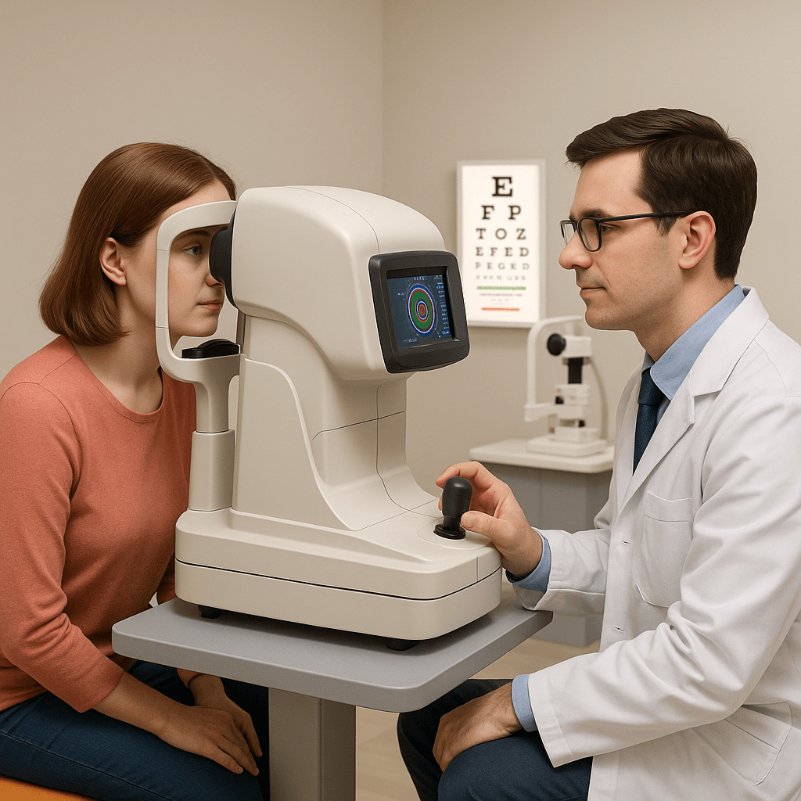The eye care industry is changing fast. Customers now expect quick and accurate service. They also want comfort and modern tools. This is where digital eye testing machines come in. They help optical stores provide better and faster care. In this article, we will explain why every optical store should have one.
1. What Is a Digital Eye Testing Machine?
A digital eye testing machine is a smart device used to check a person's vision. It replaces the old manual methods. These machines use sensors and software to measure eye power. They can also detect common vision problems.
Some machines are used to test refraction. Others check eye pressure or capture retina images. The goal is to give fast, correct results without manual effort.
2. How It Works
Most digital eye testing machines work in three simple steps:
Positioning – The customer places their chin and forehead on the machine rest.
Scanning – The machine shines light into the eyes and records how it reflects.
Results – The data is shown on the screen. It helps decide the right glasses or detect issues.
Some machines even print the results or send them to a computer system.
3. Benefits of Using a Digital Eye Testing Machine
a) Fast Results
Digital machines give results in seconds. You don’t have to wait long. This helps optical stores serve more people each day.
b) High Accuracy
Human errors are common in manual testing. Digital tools reduce these mistakes. They give accurate and repeatable results.
c) Customer Comfort
Most people find digital testing more comfortable. There are no long eye chart sessions. Machines are silent and smooth.
d) Professional Image
Modern machines make your store look professional. It shows that you care about technology and customer care.
e) Easy Record Keeping
Many digital machines store results. You can access past data easily. It helps when customers return later.
4. Why Optical Stores Should Upgrade
a) Meet Customer Expectations
Today’s customers are tech-savvy. They trust clinics with digital tools. If you don’t offer that, they may go elsewhere.
b) Save Time for Staff
With digital testing, your staff spends less time per customer. That means more time for sales or other services.
c) Stay Ahead of Competition
Many optical stores are upgrading to digital tools. If you don’t, you may fall behind your competitors.
d) Boost Revenue
Faster service means more customers in a day. Better accuracy means better glasses. This leads to fewer returns and happier customers.
5. Cost vs. Value
Some stores worry about the price of these machines. Yes, digital machines can be costly. But they are worth it.
Think of it as an investment. You save time, reduce errors, and build a better image. Over time, the machine pays for itself. Also, some suppliers offer easy EMI plans or lease options.
6. Key Features to Look For
If you plan to buy a digital eye testing machine, here are features to check:
Auto Refractometer Function – Checks refractive errors fast
Touchscreen Display – Easy to use
Compact Design – Saves space in small clinics
Data Export Option – Helps with record keeping
Non-Contact Testing – Hygienic and safe
Warranty and Support – Make sure service is available in your area
Choose a brand that is trusted and offers after-sales support. Ask for a demo before buying.
Conclusion
A digital eye testing machine is no longer a luxury. It’s a smart choice for every optical store. It makes your work easier, faster, and more accurate. It gives your customers a better experience. And it helps your business grow.
If you run an optical store and still use manual tools, it’s time to upgrade. Invest in a digital eye testing machine today and see the difference in service and sales.

